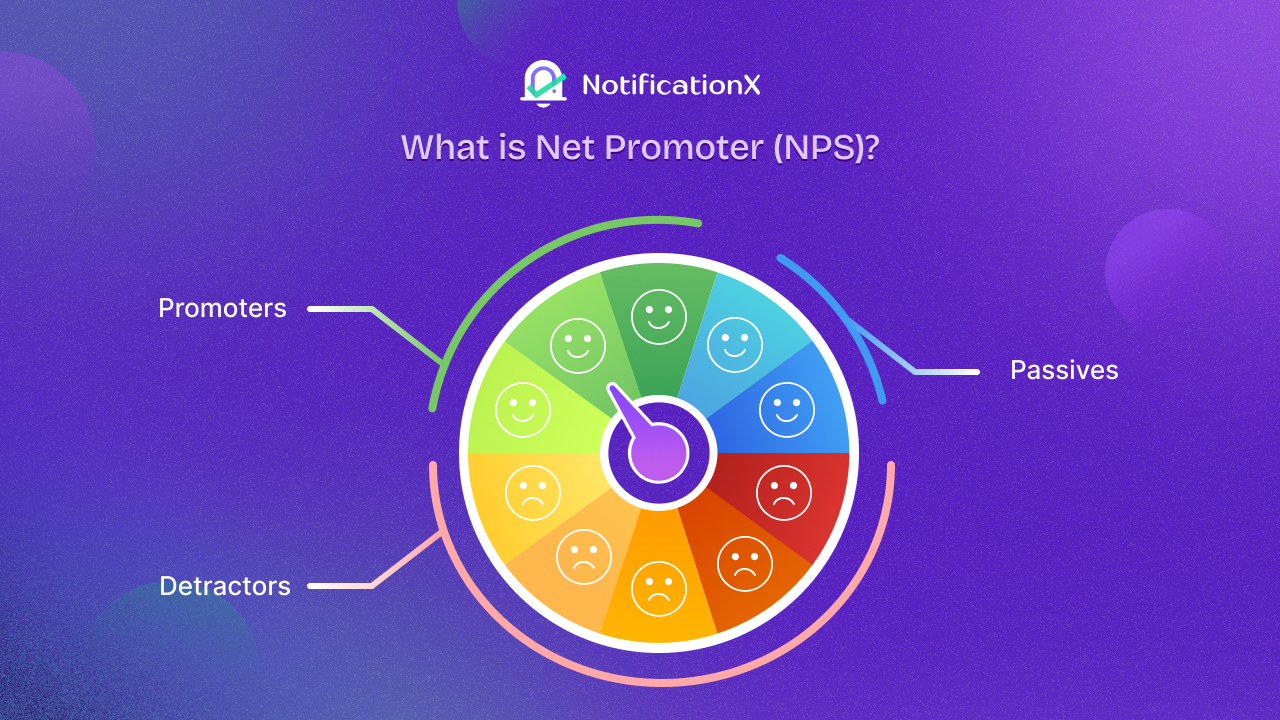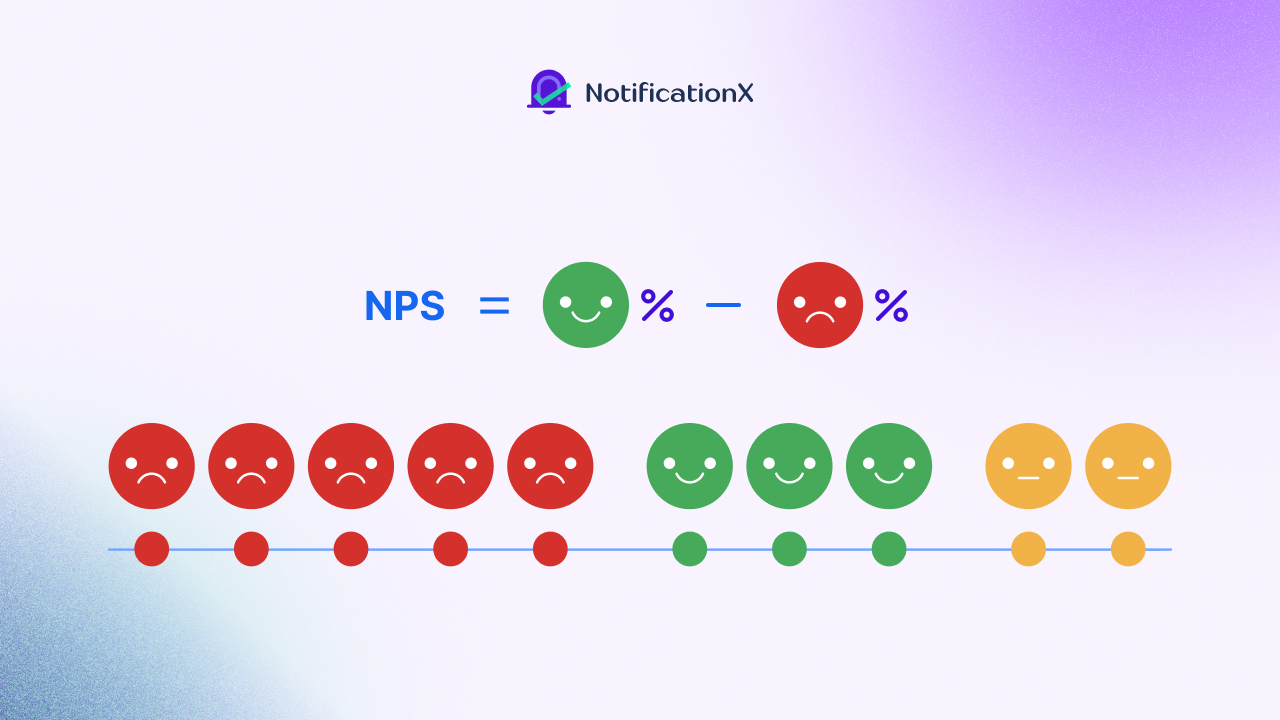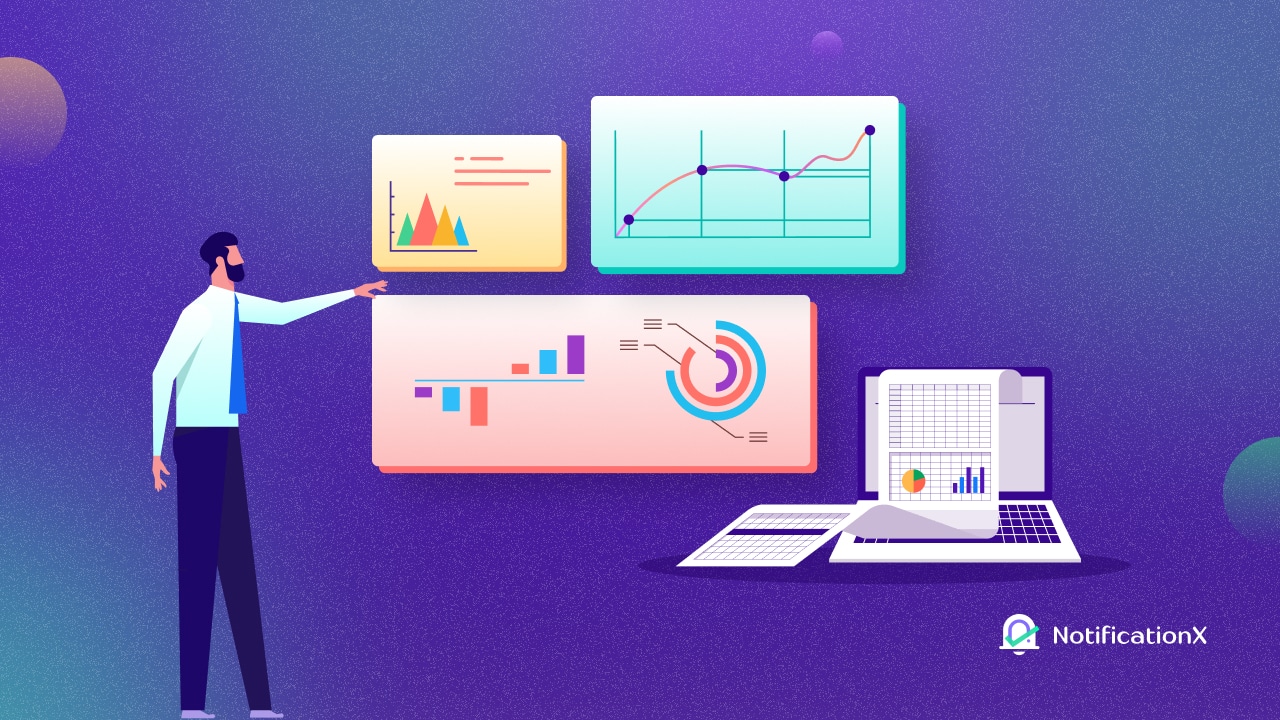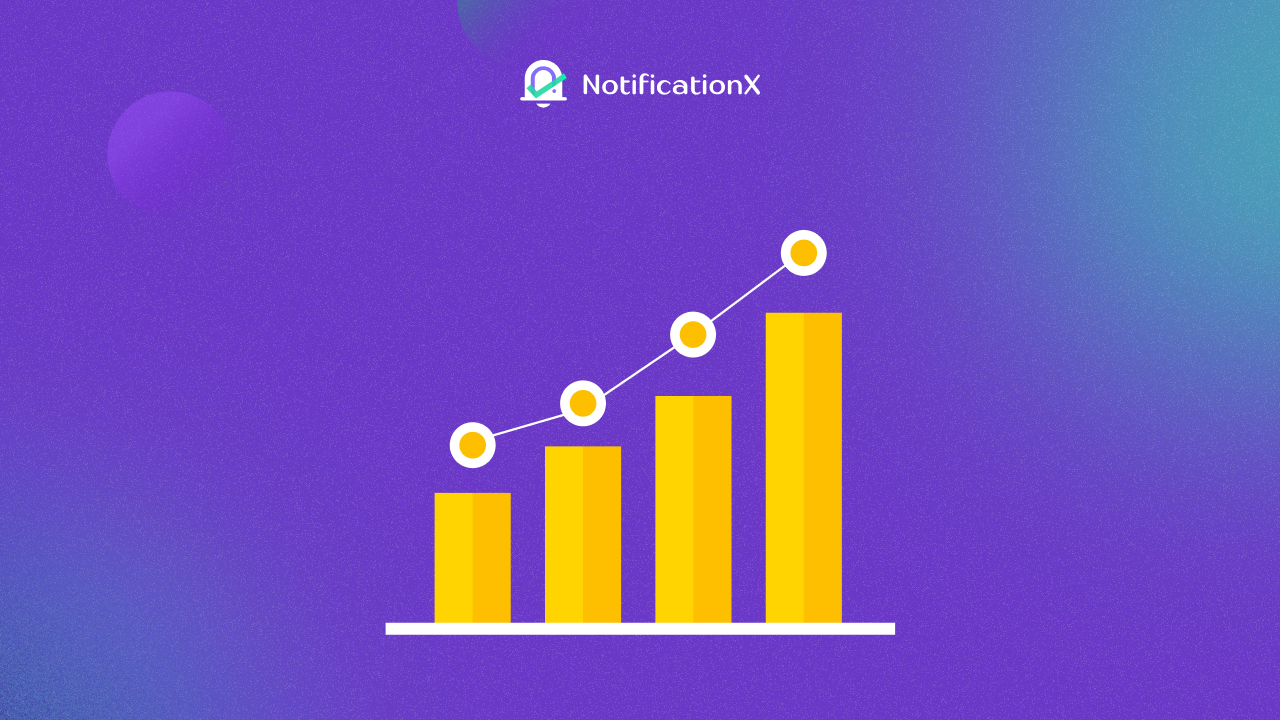Want to know how likely customers are to recommend your business? A way to that is नेट प्रमोटर स्कोर (एनपीएस) a powerful research metric for businesses to measure customer complaints, and positive feedback and predict growth. A good score in NPS indicates trust and growth on both sides. This blog introduces you to NPS, how to calculate it and its need in your business to maximize NPS and convert satisfied customers into growth guides.

What Is Net Promoter Score (NPS)?
As a research metric नेट प्रमोटर स्कोर (एनपीएस) assesses customer satisfaction and loyalty based on single-question responses. Which is “How likely are you to recommend this product/service to others?” This metric was first introduced in 2003 by Bain & Company by categorizing respondents into Promoters (score 9-10), Passives (score 7-8), तथा Detractors (score 0-6) and analyzing responses.
NPS is a way to quickly measure how likely customers are to recommend a business to others. This helps businesses understand customer satisfaction and loyalty, and improve areas where customers are unhappy. Many companies use NPS to make better decisions and improve customer experience. It is an easy and useful tool to help businesses grow.
How to Calculate Net Promoter Score (NPS)?
To know how to calculate net promoter score you need to understand one simple question. The core of NPS lies in a single, straightforward question posed to customers: “How likely are you to recommend our product/service to a friend or colleague?” This question is designed to capture the essence of customer loyalty and satisfaction. Customers respond on a scale of 0 to 10, where 0 means ‘not at all likely’ and 10 means ‘extremely likely.’
Scoring System
Responses to the NPS question are categorized into three groups:
- Promoters (9-10): These customers are loyal enthusiasts who will keep buying and referring others, fueling growth.
- Passives (7-8): These customers are satisfied but unenthusiastic. They are vulnerable to competitive offerings.
- Detractors (0-6): These customers are unhappy and can damage the brand through negative word-of-mouth.
How Is An NPS Score Calculated?
You can follow the steps below to learn how an NPS score is calculated.
- Collect Responses: Gather all customer responses to the NPS question.
- Categorize Respondents: Identify the number of promoters, passives, and detractors.
- Calculate Percentages: Determine the percentage of promoters and detractors among the respondents.
- Compute NPS: Subtract the percentage of detractors from the percentage of promoters. The formula is:
Net Promoter Score Formula

The NPS is calculated using the following formula: NPS = % of Promoters – % of Detractors. Here is a step-by-step breakdown:
Step 1: Calculate the Percentage of Promoters
- Divide the number of Promoters by the total number of respondents.
- Multiply the result by 100 to get the percentage of Promoters.
Step 2: Calculate the Percentage of Detractors
- Divide the number of Detractors by the total number of respondents.
- Multiply the result by 100 to get the percentage of Detractors.
Step 3: Subtract the Percentage of Detractors from the Percentage of Promoters
- Subtract the percentage of Detractors from the percentage of Promoters to get the NPS.
The resulting NPS score will range from -100 to 100. An NPS above 0 is generally considered good, above 50 is excellent, and above 70 is exceptional.
For example, if 60% of respondents are promoters and 20% are detractors, the NPS would be 40. The score ranges from -100 (all detractors) to +100 (all promoters).
Benefits of Using Net Promoters Score (NPS)
Net Promoter Score (NPS) offers a clear space into customer loyalty by identifying promoters, passives, and detractors. Businesses can calculate overall customer sentiment and loyalty by understanding the distribution of these groups. Which are critical indicators of long-term success. The following points are discussed below as the benefits of using NPS.
Actionable Feedback
One of the significant advantages of NPS is its ability to generate actionable feedback. The follow-up question, ‘What is the primary reason for your score?’ allows customers to provide qualitative feedback that highlights specific pain points and areas of excellence. This detailed feedback helps businesses identify and address issues promptly, improving customer satisfaction and loyalty.
For example, if detractors frequently mention poor customer service, the company can focus on training and support enhancements. Conversely, positive feedback from promoters can be leveraged in marketing strategies to attract new customers.
Comparison with Other Metrics
While नेट प्रमोटर स्कोर (एनपीएस) is a powerful tool, it is often compared with other metrics like Customer Satisfaction Score (CSAT) तथा Customer Effort Score (CES).
- Customer Satisfaction Score (CSAT): CSAT measures customer satisfaction with a specific interaction or experience, typically using a scale from 1 to 5. While CSAT is effective for gauging immediate satisfaction, it does not provide a long-term view of customer loyalty as NPS does. NPS, by asking about the likelihood of recommendation, offers a broader perspective on overall customer loyalty.
- Customer Effort Score (CES): CES measures how easy it is for customers to interact with a company, often asking them to rate the ease of their experience on a scale from ‘very difficult’ to ‘very easy.’ CES is particularly useful for identifying friction points in customer interactions. However, it focuses on effort rather than satisfaction or loyalty. NPS, in contrast, captures an emotional response tied to loyalty, making it a more comprehensive metric for long-term relationship building.
Businesses can gain a well-rounded understanding of customer experience by integrating these metrics, addressing both immediate satisfaction and long-term loyalty. This approach enables companies to refine their strategies and enhance overall customer engagement.
Strategies for Deploying NPS
You need a proper roadmap to collect responses from your customers to find accurate and reliable results to identify your business connection with your customers. Here is how you can do it:
Setting Up NPS Surveys
Deploying NPS surveys can be done through various methods, each tailored to different touchpoints in the customer journey. Common methods include:
- Email Surveys: Sending NPS surveys via email is one of the most popular methods. It allows for detailed follow-up questions and can be easily automated.
- Website Widgets: Integrating NPS surveys into your website ensures that you capture feedback from users while their experience is fresh.
- SMS Surveys: For immediate feedback, SMS surveys can be effective, especially for on-the-go customers.
- In-App Surveys: For SaaS and mobile app companies, in-app surveys are an excellent way to gather feedback directly within the user experience.
Survey Design Best Practices
Designing effective NPS surveys is crucial for maximizing response rates and obtaining actionable feedback. Consider these best practices:
- Keep It Simple: The core NPS survey should remain straightforward with the primary question: “How likely are you to recommend our product/service to a friend or colleague?”
- Follow-Up Questions: Include an open-ended follow-up question to capture qualitative feedback, such as “What is the primary reason for your score?”
- Customization: Personalize the survey with the customer’s name and relevant details to make it more engaging.
- Mobile-Friendly Design: Ensure the survey is accessible and easy to complete on mobile devices to increase response rates.
Frequency And Timing
The frequency and timing of NPS surveys significantly impact their effectiveness. Here are some guidelines:
- Post-Interaction: Send NPS surveys after significant interactions, such as after a purchase, customer service call, or product usage milestone.
- Regular Intervals: For ongoing feedback, consider quarterly or bi-annual NPS surveys to monitor trends over time.
- Avoid Survey Fatigue: Be mindful of not overwhelming customers with too many surveys. Space them out appropriately to avoid survey fatigue.
How do you interpret a Net Promoter Score?

Interpreting NPS scores requires understanding what constitutes a good score and how to use it effectively:
- Good NPS Score: An NPS above 0 is considered good, above 20 is favorable, and above 50 is excellent. Scores above 70 are considered world-class.
- Context Matters: Consider the context of your industry and company size. What might be a good score for one industry could differ for another.
Benchmarking to Identify Performance
Benchmarking your NPS against industry standards and competitors helps contextualize your performance:
- Industry Standards: Research industry averages to see where your NPS stands relative to competitors.
- Competitor Analysis: Understand how top-performing companies in your industry achieve high NPS scores and what strategies they employ.
Follow Case Studies
Real-world examples of companies with high NPS scores provide valuable insights:
- Apple: Known for its high NPS, Apple focuses on effective customer service and innovative products. Their emphasis on customer feedback loops and continuous improvement has contributed to their high scores.
- Amazon: Amazon’s commitment to customer convenience and excellent service has earned them high NPS. Their strategy includes swift problem resolution and personalized customer experiences.
These case studies illustrate that achieving high NPS scores involves a combination of excellent customer service, innovative products, and a relentless focus on customer feedback. By adopting similar strategies, other companies can improve their NPS and foster customer loyalty.
Using NPS to Drive Business Growth
Net Promoter Score (NPS) provides valuable insights into customer perceptions and experiences. Using these insights you can identify the best and least effective things in your business and upgrade accordingly. Here is how you can use NPS to drive your business growth:
Improving Customer Experience
You can use the Net Promoter score to improve customer experience initiatives. Here is how:
- Identifying Pain Points: Analyze feedback from detectors to pinpoint specific areas needing improvement. This could be product features, customer service, or overall user experience.
- Enhancing Customer Touchpoints: Use insights from Passives to understand what is satisfactory and how it can be elevated to delight customers, converting them into Promoters.
- Personalizing Interactions: Tailor interactions and communications based on customer feedback, ensuring a more personalized and engaging customer journey.
Building Customer Advocacy
Leveraging Promoters to generate positive word-of-mouth can significantly boost brand reputation and growth:
- Referral Programs: Create and promote referral programs that reward Promoters for bringing in new customers.
- User-Generated Content: Encourage satisfied customers to share their positive experiences through testimonials, reviews, and social media posts.
- Ambassador Programs: Develop brand ambassador programs where loyal customers represent and advocate for your brand in their networks.
Reducing Customer Turnover
Using NPS to identify and address issues that lead to customer turnover is crucial for maintaining a stable and growing customer base:
- Early Detection: Monitor feedback from detectors to detect dissatisfaction early and address issues before they lead to churn.
- Follow-Up Actions: Implement follow-up procedures for low scorers, such as personalized apologies, problem resolution, and reassurance of improvements.
- Continuous Improvement: Regularly update and improve products and services based on NPS feedback to prevent recurring issues that cause churn.
Limitations And Criticisms of NPS
While NPS is widely used, it’s important to be aware of its criticisms and limitations:
- Oversimplification: NPS reduces complex customer sentiments to a single score, which may overlook nuanced feedback.
- Lack of Context: A single number doesn’t provide detailed insights into why customers feel a certain way, limiting the actionable insights.
- Survey Fatigue: Frequent requests for feedback can lead to survey fatigue, reducing response rates and the accuracy of the data collected.
Supplementary Metrics
To gain a comprehensive understanding of customer experience, businesses should consider using supplementary metrics alongside NPS:
- Customer Satisfaction Score (CSAT): Measures customer satisfaction with specific interactions, providing more context to NPS scores.
- Customer Effort Score (CES): Assesses how much effort customers have to put in to get their issues resolved, offering insights into process improvements.
- Customer Lifetime Value (CLV): Helps understand the long-term value of customers, guiding strategic decisions beyond immediate feedback.
By combining NPS with these additional metrics, businesses can develop a more holistic view of their customer experience, leading to more informed and effective strategies.
How to Increase Your NPS Score?

A healthy NPS score hinges on turning detractors and passives into promoters to find the solutions and improvements to grow through the following ways.
Continuous Improvement
Maintaining and improving your NPS score requires a commitment to continuous improvement:
- Regular Monitoring: Keep a close eye on your NPS trends over time to spot any changes in customer sentiment promptly.
- Actionable Insights: Use the detailed feedback from Promoters and Detractors to make specific improvements. Implement changes based on recurring themes in feedback to address root causes.
- Iterative Processes: Adopt an iterative approach where you make small, incremental improvements, gather feedback, and adjust accordingly. This helps in keeping your customer experience aligned with evolving expectations.
Employee Engagement
Employee satisfaction and engagement play a significant role in influencing overall NPS:
- Employee Net Promoter Score (eNPS): Measure eNPS to gauge employee loyalty and satisfaction. Happy and engaged employees are more likely to deliver exceptional customer service, positively impacting NPS.
- Training and Development: Invest in training programs that empower employees with the skills and knowledge to enhance customer interactions.
- Recognition and Rewards: Recognize and reward employees who contribute to high customer satisfaction and loyalty. This fosters a culture of excellence and motivation.
Integrating Feedback
Closing the feedback loop to turn them into survey attendees naturally to get NPS is crucial for maximizing the effectiveness of NPS:
- Timely Follow-Up: Respond promptly to customers who provide feedback, especially Detractors. Acknowledge their concerns and inform them about the steps you’re taking to address their issues.
- Transparent Communication: Keep customers informed about the changes you’ve implemented based on their feedback. This explains that you are committed to improving their experience and value their input.
- Customer Engagement: Engage with Promoters by thanking them for their positive feedback and encouraging them to share their experiences with others. This not only boosts morale but also helps in spreading positive word-of-mouth.
Businesses can maximize the effectiveness of their NPS initiatives, leading to higher customer satisfaction and loyalty. By focusing on continuous improvement, employee engagement, and effective feedback loops.
Boost Your Business Growth Using NPS
Integrating NPS into your overall business strategy is crucial for sustainable growth. By understanding and acting on customer feedback, businesses can enhance customer loyalty, reduce churn, and foster positive word-of-mouth. NPS serves as a valuable tool in the broader context of customer experience management, driving continuous improvement and long-term success.
If you want to read more information and useful blogs like this one, Subscribe to our blogs और हमारे में शामिल हों फेसबुक समुदाय.




